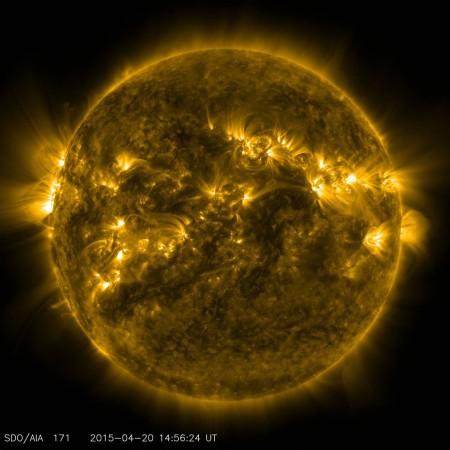
A cohort of NASA scientists and an international group of researchers provided the first ever polarization measurements of ultraviolet light discharged from the outer atmosphere of the Sun.
Also Read : Humans may be able to reproduce healthy babies in space
These measurements were provided with the help of the data accumulated from the from the high-precision science instrument CLASP -- the Chromospheric Lyman-Alpha Spectro-Polarimeter.
The polarization measurements taken previously were limited to the visible light emitted from the Sun's surface. The heliophysicists -- who analyse the Sun and the alterations taking place in the very physics of space around Earth and other planets -- used this technique to study the Sun. They can now answer various fundamental questions about the Sun's chromospheres -- an important layer present at the outer atmosphere of the Sun.

"We can't directly image everything that's going on in the solar atmosphere, but studying the polarization of ultraviolet light reveals the physics of the magnetic fields in the upper chromosphere and the transition region to better understand activity in this enigmatic region," said Amy Winebarger, CLASP's principal investigator at NASA's Marshall Space Flight Center in Huntsville, Alabama, as per a NASA statement.
"Understanding the role of the magnetic field is vital to predicting powerful solar activity and protecting space and Earth technology from potential damage," said David McKenzie, a fellow NASA heliophysicist and Winebarger's colleague.
UV light emitted from the Sun which can't penetrate Earth's atmosphere is measured using the CLASP instrument. On 3 September 2015, the instrument was sent above Earth's atmosphere using on a sounding rocket on a five-minute flight.
After CLASP turned out to be a success, an international team of researchers with McKenzie as the principal investigator is planning to launch CLASP 2 on board a sounding rocket in 2019. CLASP 2 would aid them in exploring the processes through which the energy emerges through the corona of the Sun and gets pushed outwards as solar wind.
The initial findings of the mission were described as "unprecedented" by Winebarger.
"They helped lead to the CLASP team's May award of the National Astronomical Observatory of Japan Director General Prize, citing the mission's "significant scientific results" and overall "great success," as quoted by a NASA statement.

















